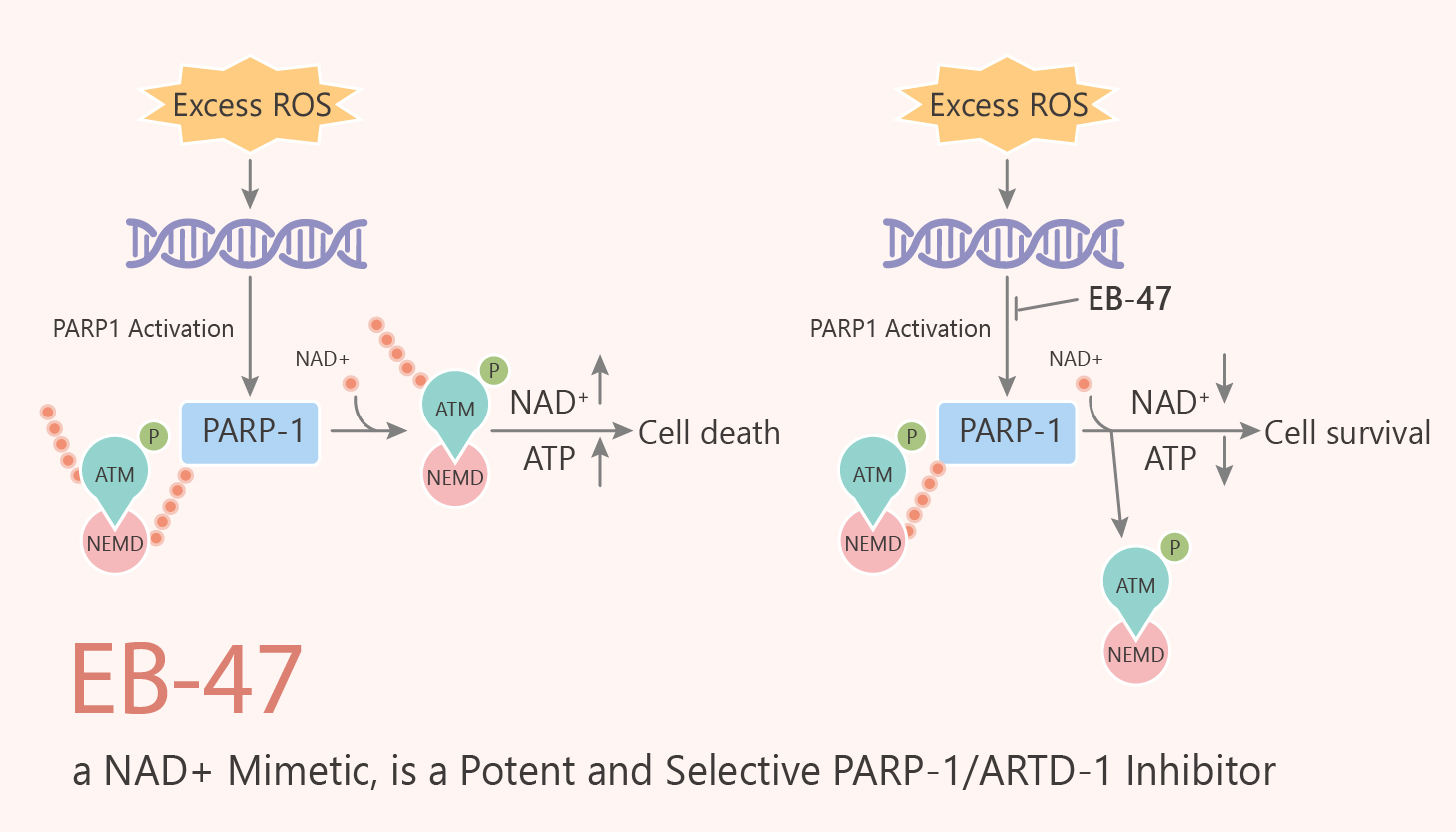Poly-ADP-ribose polymerases (PARPs) involves regulating important cellular processes, such as DNA repair, aging, and apoptosis, among others. Human cancer cells carrying BRCA1 and BRCA2 mutations are sensitive to human PARP-1 inhibitors, as a result, PARP-1 inhibitors have the potential for the target of BRCA cancer therapy.
ARTs contains two main groups: the ADP-ribosyl transferases cholera toxin-like (ARTCs) and ADP-ribosyl transferases diphtheria toxin-like (ARTDs). The ARTCs can catalyze the mono-ADP-ribosylation (MARylation) of their substrates. In the latter group, ARTDs can facilitate the binding of NAD+.
In humans, there exist seventeen PARP enzymes, only Poly(ADP-ribose) polymerase-1 (PARP1 or ARTD1), PARP2, PARP3, PARP4, Tankyrase1 and Tankyrase2 can catalyze poly-(ADP-ribosyl)nation. However, PARP10, PARP12, PARP14, and PARP15 cannot, they are mono-(ADP-ribosyl)transferases.
Human PARP-1 (hPARP1) is a nuclear chromatin-associated protein, which is most active in the PARP family. PARP-1 inhibitors selectively kill tumors harboring deficiencies in BRCA1 and BRCA2 genes.

In this article, we will introduce a potent and selective PARP-1/ARTD-1 inhibitor with an IC50 value of 45 nM, EB-47.
EB-47 is a piperazine linked adenosine analog. It exhibits a great potency with an IC50 value of 45 nM, which is 650-fold more potent than the parent isoindolinone core.
EB-47 is a mimic NAD+, it includes adenosine which connects to the nicotinamide mimic. In addition, it binds to the substrate NAD+ site of ARTD1. As a selective PARP-1 inhibitor, it also shows modest potency against ARTD5 with an IC50 value of 410 nM. Besides, it shows inhibition in excess of 50% with CdPARP. And EB-47 is able to inhibit CdPARP and HsPARP with IC50 values of 0.86 and 1.0 µM, respectively.
In vivo, EB-47 decreases the number of embryo implantation sites and blastocysts at day 5. this proves that PARP1 participates in the process of embryo implantation.
In conclusion, EB-47 is a promising PARP-1 inhibitor for cancer study.
Reference:
García-Saura AG, et al. Sci Rep. 2018 May 23;8(1):8056.